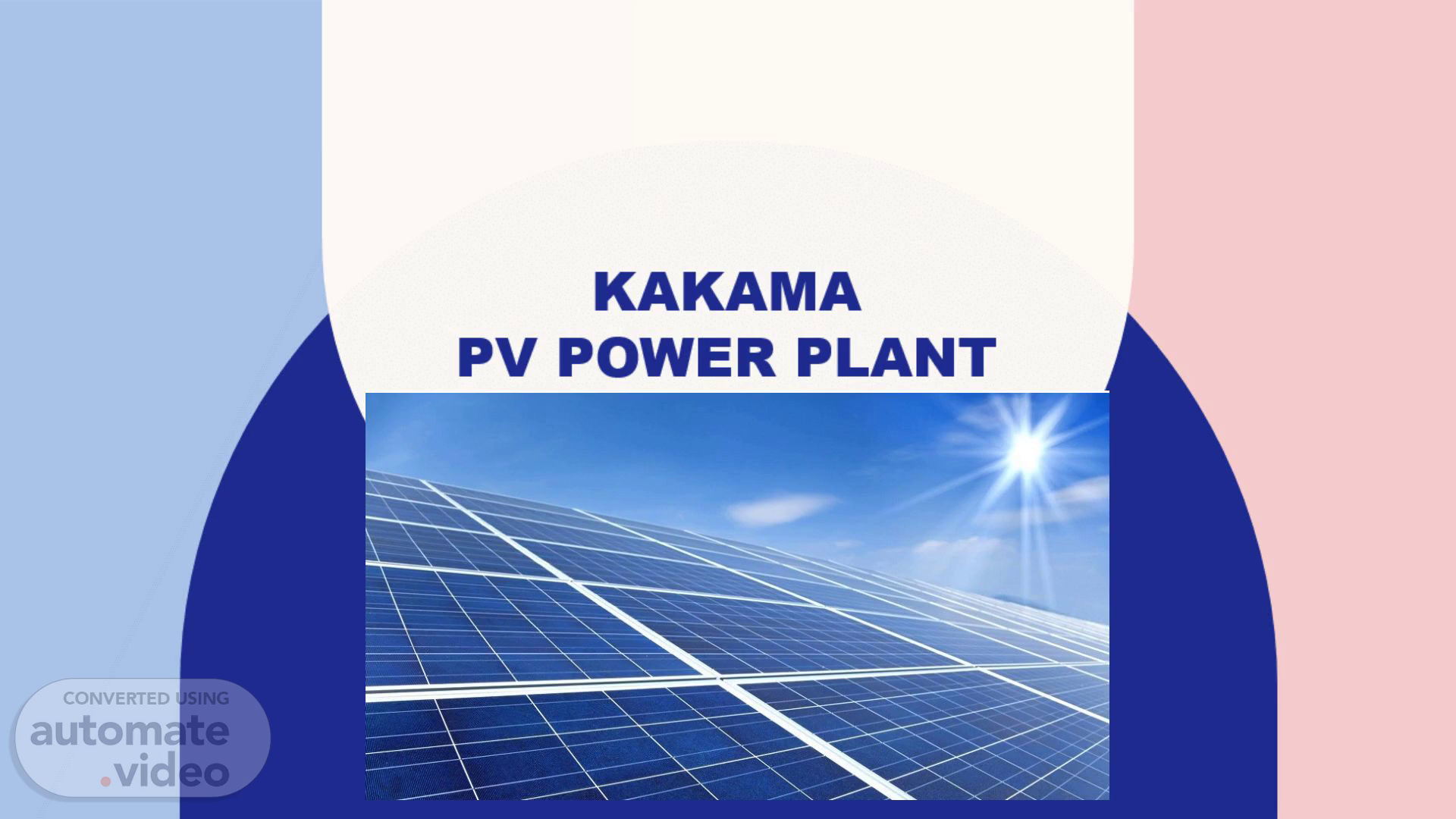
Kakama pv power plant
Scene 1 (0s)
Kakama pv power plant.
Scene 2 (6s)
Project charter. The Kakama Village is a small community of 10 households in the Sossusvlei Area, located in the heart of the Namibia National Park. Our organization, Africa Energy Solutions (AES), was invited along with other energy companies to find a safe way to provide electricity to each household in the community without posing a risk to the community, environment and the wild animals in the National Park. Our goal is to provide the community with affordable clean energy and to prevent any harm to the environment in the short or long term in the National Park and the surrounding areas. Africa Energy Solution (AES) has designed the solar park for the indigenous Kakama community of 10 residential houses situated in the heart of the National Park. The solar system will generate clean renewable power by harnessing solar energy from the sun and converting it to usable AC power. The energy system consists of an off-grid solar plant, sized at 100 kWp, integrated with a Battery Energy Storage System (BESS) with a total capacity of 200kWh..
Scene 3 (1m 57s)
Plant requirements. - Cooking Appliance with total average consumption of 2kW per household. - Water heating appliance (Geyser) with consumption power of 2kW per household. - Refrigeration with the consumption power of 0.4kW for 24/2 hrs per day per household.From the point of power generation to the point of consumption. Due to the distance of between the two points, the below were proposed: - 75kWp + 25% safety factor + losses = 100kVA power transformer - Underground cabling to minimise the risk of electric short to the animals in and around the park. - Compliance to all international standards, and government regulations - There is a preference, for renewable energy sources, which will minimize environmental impacts, and compromise the natural habit, and animal of the National Park. - The implementation of safety measures, that protects maintenance personnel , residents, and all visitors, and the infrastructure - Lights are estimated to consume 0.6kW for 4hrs per day per household - Socket outlets with total estimated consumption load of 1kW per household. The load per household is 6kWp + 25% (factor) = 7.5kWp 7.5kWp x 10 household = 75kWp estimated total load Estimated Power: The load per household is 6kWp + 25% (factor) = 7.5kWp 7.5kWp x 10 household = 75kWp estimated total load Underground cabling to minimise the risk of electric short to the animals in and around the park. Compliance to all international standards, and government regulations System commissioning and Functional Testing to ensure proper functionality and performance. - The Installation of an effective monitoring systems to track power usage, and power performance, might be key to this remote application.- System commissioning and Functional Testing to ensure proper functionality and performance.
Scene 4 (4m 14s)
[Audio]
Scene 6 (6m 50s)
Project Risks. 6.
Scene 8 (7m 28s)
Detailed Specifications. 8. System Off -grid PV Plant with battery storage Nominal Power Output (KW) 100KW 1 Output Voltage (V) 400/230V Battery pack storage supply capacity at normal load (hours) 250 kWh 5hrs Transformer (KVA) 125 kVA 1 PV Module Model No: T-20M Watts Peak (w): 400W Short circuit current (A): 10.7 Amps Open circuit voltage: 50 V Maximum power current: 8A Maximum power voltage: 40V Dimension of panel: 2000*1000*25mm Weight: 10 Kg 250 solar panels Inverter OFF-Grid inverter. Charge Controller with MPPT technology 4.
Scene 9 (8m 33s)
Work breakdown structure. Kakama solar pv plant Testing & Construction Commissioning Planning Site survey System design Procurement Site clearing and grading PV panels installation Distribution network setup Training of community Solar PV tests Handover Operations & maintenance monitoring Maintenance schedule Operations plan.
Scene 10 (9m 5s)
Gantt chart. 10. Kakame vlllege soler proJeet Afrlca Enerw SduUorB sae ProJec• start: wek: 7" 2Ä,24 aar2' & 27,24 70 "24 S' 24 80 & 2' ions &.
Scene 11 (9m 16s)
PERT DIAGRAM. 11. PAERT Chart Template Africa Enerß Solution Project Mana*r - HE tenant e.
Scene 12 (9m 25s)
Thank you. 12.